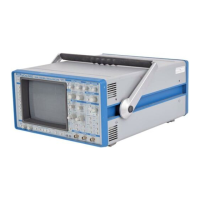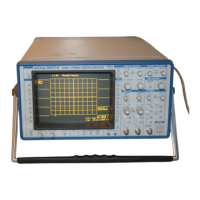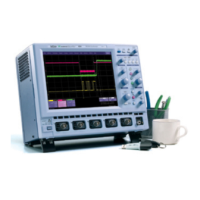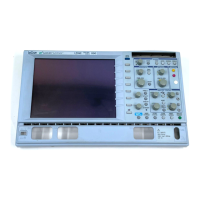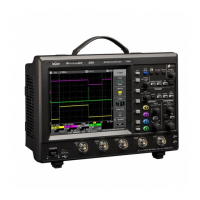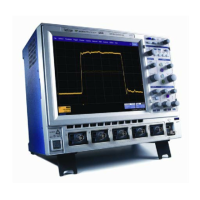C–6
Appendix C
Rectangular windows provide the highest frequency resolution
and are thus useful for estimating the type of harmonics present
in the signal. Because the rectangular window decays as a
sinx/x function in the spectral domain, slight attenuation will be
induced. Alternative functions with less attenuation — Flat-top
and Blackman-Harris — provide maximum amplitude at the
expense of frequency resolution. Whereas, Hamming and von
Hann are good for general purpose use with continuous
waveforms.
Improving Dynamic Range Enhanced resolution (see Appendix B) uses a low pass
filtering technique that can potentially provide for three
additional bits (18 dBs) if the signal noise is uniformly distributed
(white). Low pass filtering should be considered when high
frequency components are irrelevant. A distinct advantage of
this technique is that it works for both repetitive and transient
signals. The SNR increase is conditioned by the cut-off
frequency of the Eres low pass filter and the noise shape
(frequency distribution).
LeCroy digital oscilloscopes employ FIR digital filters so that a
constant phase shift is maintained. The phase information is
therefore not distorted by the filtering action.
Spectral Power Averaging Even greater dynamic-range improvement is obtained
on signals showing periodicity. Moreover, the range can be
increased without sacrificing frequency response. The LeCroy
oscilloscope being used is equipped with accumulation buffers
32 bits wide to prevent overflows.
Spectral power averaging is useful when the signal varies in
time and the mean power of the signal needs to be estimated.
Typical applications include noise and pseudo- random noise.
Whereas time averaging ignores phase information, spectral
averaging tracks magnitude as well as phase information. It is
thus a superior estimator. And the improvement is typically
proportional to the square root of the number of averages. For
instance, averaging white noise at full scale over 10 sweeps
yields a typical improvement of nearly 20 dBs.
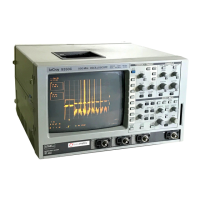
